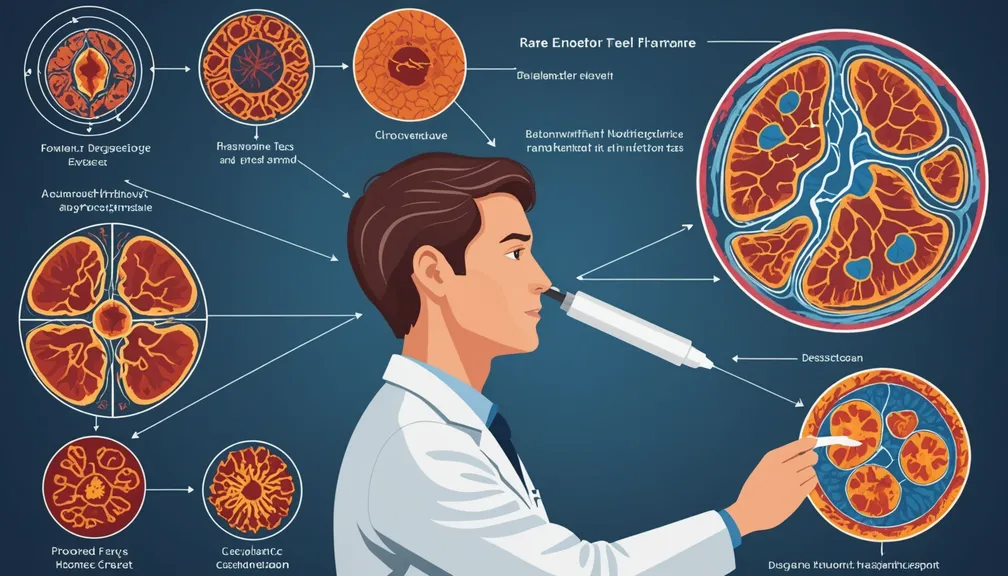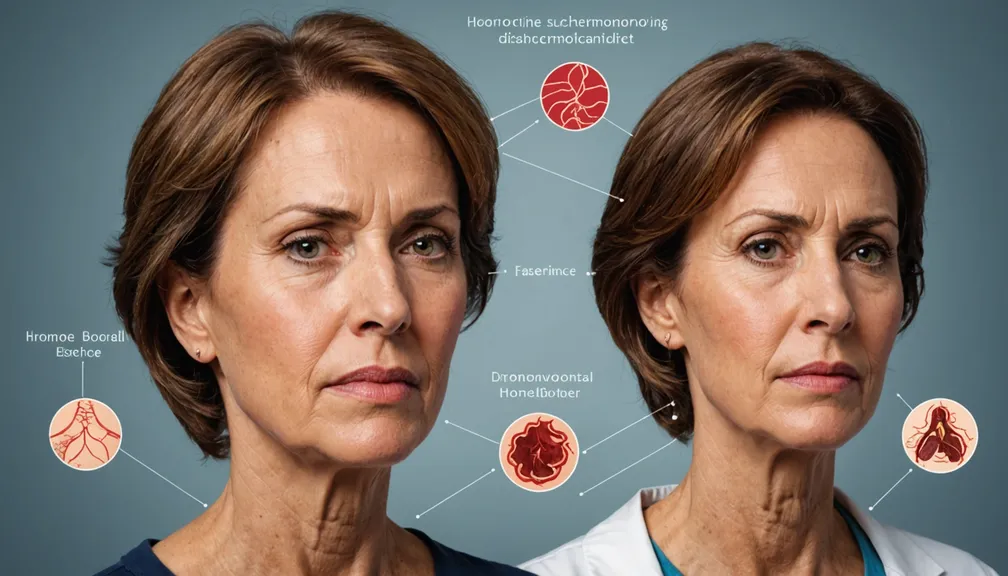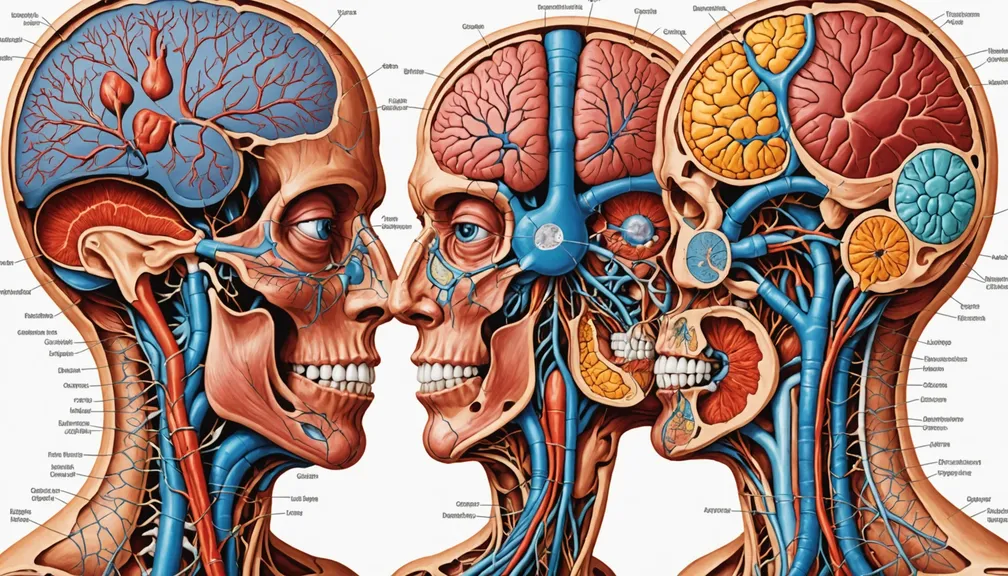Diagnostic Process: Hormone Level Testing and Imaging
When dealing with rare endocrine disorders, understanding the diagnostic process is crucial. This lesson will guide you through hormone level testing and imaging studies, explaining what to expect and how these methods help in diagnosing your condition.
1. Hormone Level Testing
Hormone level testing is a fundamental step in diagnosing endocrine disorders. It measures the amount of specific hormones in your blood to identify any imbalances.
a. Purpose of Hormone Testing
- Identify Imbalances: Detect abnormal levels of hormones produced by glands such as the thyroid, adrenal, or pituitary glands.
- Diagnose Disorders: Help diagnose conditions like Addison's disease, thyroid disorders, or multiple endocrine neoplasia.
- Monitor Treatment: Assess how well your treatment is working by tracking hormone levels over time.
b. Types of Hormone Tests
- Blood Tests: The most common method, where a sample of your blood is taken to measure hormone levels.
- Saliva Tests: Measure hormone levels in saliva, useful for certain hormones like cortisol.
- Urine Tests: Assess hormone metabolites over a 24-hour period, providing a comprehensive overview.
c. Preparing for Hormone Tests
- Fasting: Some tests require you to fast for a certain period before the blood sample is taken.
- Medications: Inform your doctor about any medications or supplements you are taking, as they may affect hormone levels.
- Timing: Certain hormones fluctuate throughout the day, so tests may need to be scheduled at specific times.
d. During and After the Test
- During the Test: A healthcare professional will draw a blood sample, which might cause brief discomfort.
- After the Test: You can resume normal activities immediately. Minor bruising at the needle site is possible but usually temporary.
2. Imaging Studies
Imaging studies provide a visual representation of your hormone-producing glands and help identify structural abnormalities.
a. Purpose of Imaging in Endocrine Disorders
- Visual Assessment: Detect tumors, cysts, or other structural changes in glands like the thyroid, adrenal, or pituitary glands.
- Guiding Treatment: Assist in planning surgical procedures or other treatments by providing detailed images of affected areas.
b. Types of Imaging Tests
- Ultrasound:
- How It Works: Uses sound waves to create images of glands.
- When It's Used: Commonly for thyroid or adrenal gland evaluations.
- Computed Tomography (CT) Scan:
- How It Works: Combines multiple X-ray images to create cross-sectional views.
- When It's Used: Identifying tumors or structural anomalies in various endocrine glands.
- Magnetic Resonance Imaging (MRI):
- How It Works: Uses magnetic fields and radio waves to produce detailed images.
- When It's Used: Evaluating soft tissues, such as the pituitary gland.
- Positron Emission Tomography (PET) Scan:
- How It Works: Uses radioactive tracers to visualize metabolic activity.
- When It's Used: Detecting certain types of tumors and assessing their activity.
c. Preparing for Imaging Tests
- Fasting: Some imaging tests require you to fast beforehand.
- Clothing: Wear comfortable clothing without metal fasteners, as metal can interfere with imaging results.
- Contrast Agents: You may need to receive a contrast dye to enhance image quality. Inform your doctor of any allergies.
d. During and After Imaging Tests
- During the Test: Remain still to ensure clear images. Some tests may require you to lie down for an extended period.
- After the Test: You can usually resume normal activities immediately, unless you've received a sedative or contrast agent.
3. Interpreting the Results
Understanding your test results helps in making informed decisions about your health.
a. Hormone Level Results
- Normal Range: Indicates healthy hormone levels.
- High Levels: May suggest overactive glands or hormone-producing tumors.
- Low Levels: May indicate underactive glands or hormone deficiencies.
b. Imaging Results
- Normal Images: No structural abnormalities detected.
- Abnormal Findings: Presence of tumors, cysts, or other anomalies requiring further evaluation or treatment.
4. Specialists Involved in Diagnosis
A team of healthcare professionals collaborates to accurately diagnose and manage endocrine disorders.
a. Endocrinologists
- Role: Specialists in hormone-related diseases. They lead the diagnostic process and develop treatment plans.
b. Radiologists
- Role: Medical doctors who interpret imaging studies and provide detailed reports to guide diagnosis and treatment.
c. Primary Care Physicians
- Role: Often the first point of contact. They refer patients to specialists and coordinate overall care.
d. Other Health Professionals
- Nurses and Lab Technicians: Assist with tests and provide patient care.
- Surgeons: May perform operations if structural abnormalities are found.
- Genetic Counselors: Offer guidance if a hereditary condition is suspected.
5. Tips for Navigating the Diagnostic Process
Managing the diagnostic journey can be challenging. Here are some tips to help you through:
a. Preparing for Appointments
- Bring Medical Records: Include previous test results and medical history.
- List Medications: Note all current medications and supplements.
- Write Down Symptoms: Document your symptoms, their duration, and any triggers.
b. Questions to Ask Your Doctor
- About Tests: What do these tests involve? Are there any risks?
- Results Interpretation: What do my results mean? What are the next steps?
- Treatment Options: What are the available treatments? What are their benefits and risks?
c. Managing Anxiety and Stress
- Stay Informed: Understanding the process can reduce uncertainty.
- Seek Support: Talk to loved ones or join support groups.
- Practice Relaxation Techniques: Techniques such as deep breathing or meditation can help manage stress.
Understanding the diagnostic process for rare endocrine disorders empowers you to take an active role in your health care. By knowing what hormone level testing and imaging involve, you can better navigate your diagnosis and treatment journey with confidence.






